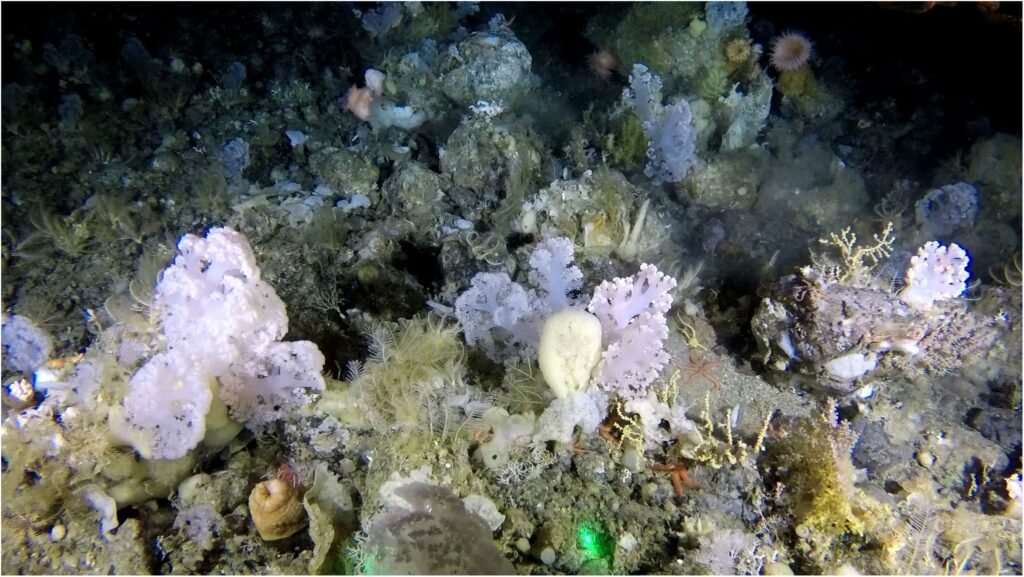Using an innovative camera, researchers have discovered a deep-sea soft coral garden in Greenland, the first of its kind to have been identified and assessed in Greenlandic waters. This could have implications for the management of deep-sea trawl fisheries that are close to the habitat.

The soft coral garden is located at 1,600 feet below sea level (almost 500 meters), where the pressure is 50 times greater than at the surface. The habitat, delicate and diverse, is full of life with abundant cauliflower corals, feather stars, sponges, anemones, brittle stars, hydrozoans, bryozoans, and other organisms.
The researchers found it using a low-tech rig called a “benthic sled,” which consists of a GoPro camera, lights, and laser pointers, which they set into special pressure-proof cases, mounted on a steel frame and hung from their research vessel. They recorded video at 18 locations and discovered the garden.
“The deep sea is often over-looked in terms of exploration. In fact we have better maps of the surface of Mars, than we do of the deep sea,” said Stephen Long, first author of the study. “The development of a low-cost tool that can withstand deep-sea environments opens up new possibilities for our understanding and management of marine ecosystems.”
The seafloor is a very dark place and that’s why the team needed lights on the rig. The algae that is usually found in corals in shallow waters, giving them their bright colors, can’t survive in the deep sea. But corals can, as well as other organisms that depend on them for shelter. The researchers found over 44,000 individual organisms there.

Surveying the deep sea has so far proved difficult and expensive. This is partly explained by the ocean pressure, which increases by one atmosphere (which is the average atmospheric pressure at sea level) every 10 meters of descent. That’s why surveys in the deep-sea rely on expensive remote operating vehicles and manned submersibles that can tolerate the pressure.
“Given that the ocean is the biggest habitat on earth and the one about which we know the least, we think it is critically important to develop cheap, accessible research tools. These tools can then be used to explore, describe and crucially inform management of these deep-sea resources,” Chris Yesson, co-author, said in a statement.
The discovery is particularly significant as the deep sea is the most poorly known habitat on Earth, despite it covering 65% of the planet. Until very recently, very little was known about Greenland’s deep-sea habitats, their nature, distribution, and how they are impacted by human activities.
Although it’s not that well understood, the deep-sea is crucial to the economy of Greenland. Up to 90% of the exports of the country are owed to fisheries, which is also a crucial source of jobs and food in the country. But the recently found garden and many others could be at risk in the future due to deep-sea mining and bottom trawling.
That’s why the authors call for the garden they discovered to be protected as a Vulnerable Marine Ecosystem under United Nations guidelines. They are also working with the Greenland government and the local fishing industry, who have been receptive to putting protections for the garden in place.
The study was published in the journal Frontiers in Marine Science.






